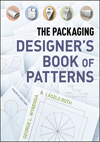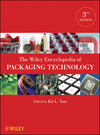Printing: Labels
Labeling: The Perfect Blend






The Pucketts opened the first Caribou Coffee in Edina, Minnesota in 1992 and 20 years later, Caribou boasts nearly 500 company-owned locations, over 6,000 employees and $326.5 million in annual revenue. As recently as two years ago, the specialty coffee market accounted for $13.65 billion in sales, one-third of the nation’s $40 billion coffee industry. It’s anticipated to reach $18 billion this year and its growth has been trending around four times that of traditional coffee.
Consumers’ increased craving for Caribou’s unique coffee inspired the coffee manufacturer to re-examine its manufacturing process. Specifically, Caribou needed to improve its packaging process to meet growing demand and improve its quality.
Upgrading for Growth
In the late 1990s, Caribou Coffee was operating out of what was believed to be a former Model-T car warehouse in downtown Minneapolis, MN. It stored and hand blended its raw coffee in the basement. The roasting technician would have to hop in the elevator, go down to the basement to ensure the batch he was going to roast was ready, and activate a blower to send the beans to the coffee roaster. He would then hop back in the elevator and continue his next batch.
Once he’d finish, he would go back downstairs and start the cycle all over again.
Caribou Coffee had one vertical form/fill/seal machine when Rick Larsen began working for the company in 1999. All other packaging involved hand-packaging premade bags. Larsen, the senior manager of engineering and maintenance, supply chain, is responsible for the packaging and roasting equipment noticed some inefficiencies within his lines. Most notably, he recognized that the coding system they were using was costly and unreliable. When it would go down, Caribou would have to hand-apply the label. At that time, it wasn’t as critical since Caribou was printing on silver foil package. But in 2003, the decision was made to print on a new foil structure and the option of living with downtime, as it had done in the past, was no longer an option.
“At the time, we were looking to automate our 16- and 12-ounce packages, as well as making a more appealing package,” says Larsen. “But we were having printing issues. Our system at that time wasn’t user friendly, so we decided to upgrade to the Markem SmartDate 2.”
Implemented when Caribou added a new packaging line, the SmartDate is a thermal transfer over printer that delivers the highest quality printing at the fastest speeds on flexible packaging films, foils and labels. Now on its fifth version, the SmartDate delivers increased levels of efficiency in date, batch and traceability compared to competitive units. Caribou ultimately replaced its previous coding system with another SmartDate.
The SmartDate has advanced ribbon saving features including industry leading 0.5 mm print gap, delivering more prints for the same length ribbon. It can print up to 1,000 mm per second and as low as 5 mm per second, meeting extreme substrate acceleration/deceleration challenges. The SmartDate also features advanced digital color control, which enables the user to set printer and production parameters including auto rolling of date and shift codes.
Keeping Up With Demand
Caribou continued to grow and with the continued growth came more expansion. The company moved its production to a new facility in 2004, which is its current location. The facility is approximately 110,000 square feet with another 20,000 square feet in offices built on the second floor. Warehouse and distribution is located in the center of the facility, while raw coffee storage, batching and blending is located on the other end. There is a separate room for roasting and packaging, and within that room, there existed new challenges for Larsen. Additional production lines were added and Larsen quickly realized he needed to do case coding.
“Our customers were looking for two-sided, corner wrap label. We had tried ink jet printers, but the quality wasn’t there,” he says. “So it was customer demand that drove us to implement Markem’s CimJet.”
The CimJet Label printer applicators are recognized worldwide for their high-quality printing, outstanding reliability and rugged durability in the toughest of manufacturing environments. The proven design delivers accurate, clear, crisp codes and 100 percent readable barcodes meeting GS1 (UCC-EAN) standards to enable superior visibility in the supply chain.
Other features of CimJet include:
- Uptime – The built-in user interface provides simple operation and enhances quick fault recovery. Synchronized label and ribbon changes minimize potential operator error and contribute to the CimJet’s recognized reliability.
- Performance – The CimJet offers a range of label applicators such as corner wrap and tamp blow applicators to meet customer demands. Plug-in barcode scanner provides instant confirmation of label application and barcodes read.
- Connectivity – All CimJet machines feature internal data storage for simple product selection. CimJet labelers can be run independently without the need of a local PC or network connection. Integration into packaging lines, databases and ERP systems is flexible via CoLOS Enterprise Software.
Adding Flexibility
Production expansion not only involved the quality of coffee, but the types of coffee as well. Caribou offers roughly 20 varietals that can change based on seasons or if Caribou believes it’s not meeting expectations. The number of codes involved with 20 varietals can create a variety of problems if not handled properly. Caribou needed maximum flexibility while utilizing a minimum number of expensive coffee films to match the different labels and bar codes.
“The coding challenge was a big challenge and one of the reasons why we decided to go with Markem-Imaje’s CoLOS enterprise and networking,” Larsen says. “It was harder to manage before but that software has helped me managing the different varietal types.”
Markem-Imaje put the printers on Host mode, which allows Caribou to download any job off of a central network. All their codes are stored in a general database. They can then go to a workstation, select the job they want, pick the line they want and then send it down to that particular line.
“They need manufacturing flexibility with production date changes, manufacturing ground coffee versus whole bean, or the various size requirements such as one-pound or five pound bags,” says Markem-Imaje sales engineer Eric Doyle. “When you multiply the matrix, you have to do it all. And the only way to handle that is with the network.”
Caribou Coffee
Marken-Imaje
Looking for a reprint of this article?
From high-res PDFs to custom plaques, order your copy today!











